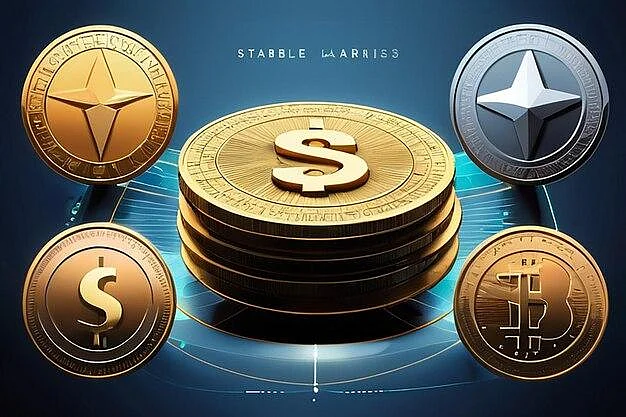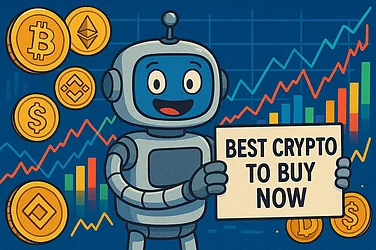Within the ever-changing world of digital finance, stablecoins hold a special place among those bridges between traditional finance and blockchain technology. While cryptocurrencies such as Bitcoin and Ethereum are highly volatile, with their values fluctuating dramatically, stablecoins were designed in a manner that they would maintain their value relatively well, often pegged against a fiat currency, such as the US dollar. This has made them an indispensable tool within the world of NFT and DeFi for smoother transactions, easier trading, and even more predictable financial interactions.
With all global economies now upgrading their mechanisms to blockchain-based systems, understanding stablecoins will be key to assessing the future of decentralized finance. From complete beginners exploring the crypto ecosystem to expert investors, stablecoins are a guiding force through nearly every digital transaction, especially in both NFT and DeFi.
What Exactly Are Stablecoins?
Stablecoins are digital currencies that attempt to combine the best of both worlds: the speed and security of cryptocurrencies, with the stability of traditional money. In general, each stablecoin is usually backed by some form of reserve asset, such as fiat currency, gold, or other cryptocurrencies. The object is to minimize price swings and provide users with a more predictable means of exchange.
Ultimately, stablecoins come in three major types:
Fiat-collateralized stablecoins: These are collaterally backed 1:1 by the fiat reserves of a central entity. Examples include Tether (USDT) and USD Coin (USDC).
Crypto-collateralized stablecoins: These are backed by other cryptocurrencies. An example is DAI, which is collateralized by Ethereum-based assets.
Algorithmic stablecoins rely on algorithms and smart contracts that balance supply and demand automatically, which maintains price stability without direct collateral.
The variations make stablecoins flexible, hence their ability to serve diverse needs between the NFT and DeFi ecosystems.
The Role of Stablecoins in DeFi
DeFi is a blockchain-based financial system without intermediaries like banks and brokers. Instead, users complete transactions with one another through smart contracts. Stablecoins are the lifeblood of the ecosystem since they provide a stable medium for lending and borrowing, staking, and liquidity provision.
If DeFi markets excluded stablecoins, then they would actually be chaotic due to the huge volatility. It would create valuation problems for users in assessing their assets, determining returns, and managing risk effectively. Stablecoins are a way to calculate consistent yield, predictable interest rates, and facilitate smoother lending. For example, when you deposit into a DeFi protocol, it often converts your assets into stablecoins so that the value can be maintained through the process.
In other words, stablecoins are what make DeFi approachable for mainstream users by letting individuals and institutions interact with decentralized platforms without fear of huge price swings.
Stablecoins and NFTs are driving the Digital Art and Asset Revolution
The world of NFTs has exploded in recent years, completely upending the way we think about ownership, creativity, and digital identity in general. Yet, NFT innovation and DeFi are inextricably linked, with stablecoins continuing to play an important role in keeping this ecosystem functional and approachable.
Most of the time, creators mint or sell NFTs using stablecoins as the preferred medium of exchange. In this manner, the value of the artwork or collectible in question remains the same, independent of any fluctuation in the crypto market. Let's say, for instance, that a creator sells an NFT for 500 USDC; they can be sure that this amount will be worth 500 USD when spent, rather than being worth the highly volatile Ethereum or Bitcoin equivalent.
The usage of stablecoins also grows within those DeFi platforms that include NFTs for lending or collateral. Such a merge of NFT and DeFi opens completely new opportunities for creators and investors alike, be it NFT-based loans or yield farming with the asset class NFT.
Advantages of Stablecoins
The advantages of stablecoins have brought about the following changes to the global financial forefront:
Stability: They decrease the risk linked to cryptocurrency volatility, and hence they are ideal for payments and savings.
Accessibility: Stablecoins enable access to digital financial tools for people in all parts of the world, even when a bank account is not at one's disposal.
Speed and Cost Efficiency: Stablecoin transactions are faster and usually cheaper compared to wire transfers.
Interoperability: Stablecoins can easily move across different blockchain networks, being used in a variety of NFT and DeFi applications.
All these features combined make stablecoin a useful tool for both individuals and companies willing to try their hand at blockchain-based finance.
Challenges and Risks of Stablecoins
Yet, amidst their long list of advantages, stablecoins also have a number of challenges and risks which can't be gained. In respect to the latter, regulatory scrutiny has been significantly raised, much of it touching on transparency and the management of reserves. For example, a number of stablecoin providers have come under criticism for failing to provide unequivocal evidence of collateral holdings.
It is in this respect that algorithmic stablecoins have shown their weaknesses, as was apparent from the collapse of TerraUSD in 2022: an algorithmic collapse resulted in massive losses. Incidents of this type show a great demand for strong regulation and transparency, which should be enforced in terms of user protection and financial stability within emergent NFT and DeFi markets.
Another challenge is the risk of centralization: even as stablecoins make it easier to generally use DeFi, many of them are still centrally managed and thus may raise concerns about control, censorship, and compliance.
The Future of Stablecoins
With the continuous development and evolution of global financial systems, the future of stablecoins looks bright. Central banks are now looking to explore their digital currencies, also called CBDCs, which bear a resemblance to stablecoins. Meanwhile, the latest developments within NFT and DeFi are ambitious toward more sophisticated use cases where stablecoins play a foundational role. As regulation matures and blockchain technology evolves, stablecoins will be staple components of digital exchange, powering everything from digital art markets to international trade and decentralized governance. In essence, stablecoins will remain right at the heart of the NFT and DeFi revolution as a backbone for the next generation of financial systems.
FAQs
Q1: How are stablecoins different from regular cryptocurrencies?
Whereas cryptocurrencies such as Bitcoin or Ethereum can have rampant increases or decreases in value, stablecoins are designed to maintain stable value by being pegged to reserve assets, including fiat currency.
Q2: Are stablecoins safe to use?
In general, stablecoins are safe if they are issued by reputable organizations that transparently manage their reserves. Still, one should be cautious about unstable, less popular, or algorithmic stablecoins without proper auditing.
Q3: What is the relationship between stablecoins and DeFi?
Stablecoins are the key currency of DeFi platforms, which allow lending, borrowing, trading, and staking with minimal volatility.
Q4: How do stablecoins help the NFT ecosystem?
They provide price stability for NFT transactions so that neither the artist nor the collector will suffer from crypto market fluctuations. They also unleash new forms of NFT and DeFi models, for example, NFT-based loans.
Q5: Will stablecoins replace traditional currencies?
Not quite, but stablecoins are increasingly one of the vital means in global digital payments and also in decentralized applications.
Conclusion
Stablecoins have emerged as one of the most powerful innovations of the digital economy, acting as a bridge between traditional finance and blockchain-based ecosystems. They empower NFT and DeFi platforms and make digital finance more reliable, approachable, and effective. As technology develops and global adoption grows, stablecoins are going to be one of the core parts of the future financial infrastructure, taming the volatile world of cryptocurrency and opening up a path for a more inclusive and decentralized global economy.





















